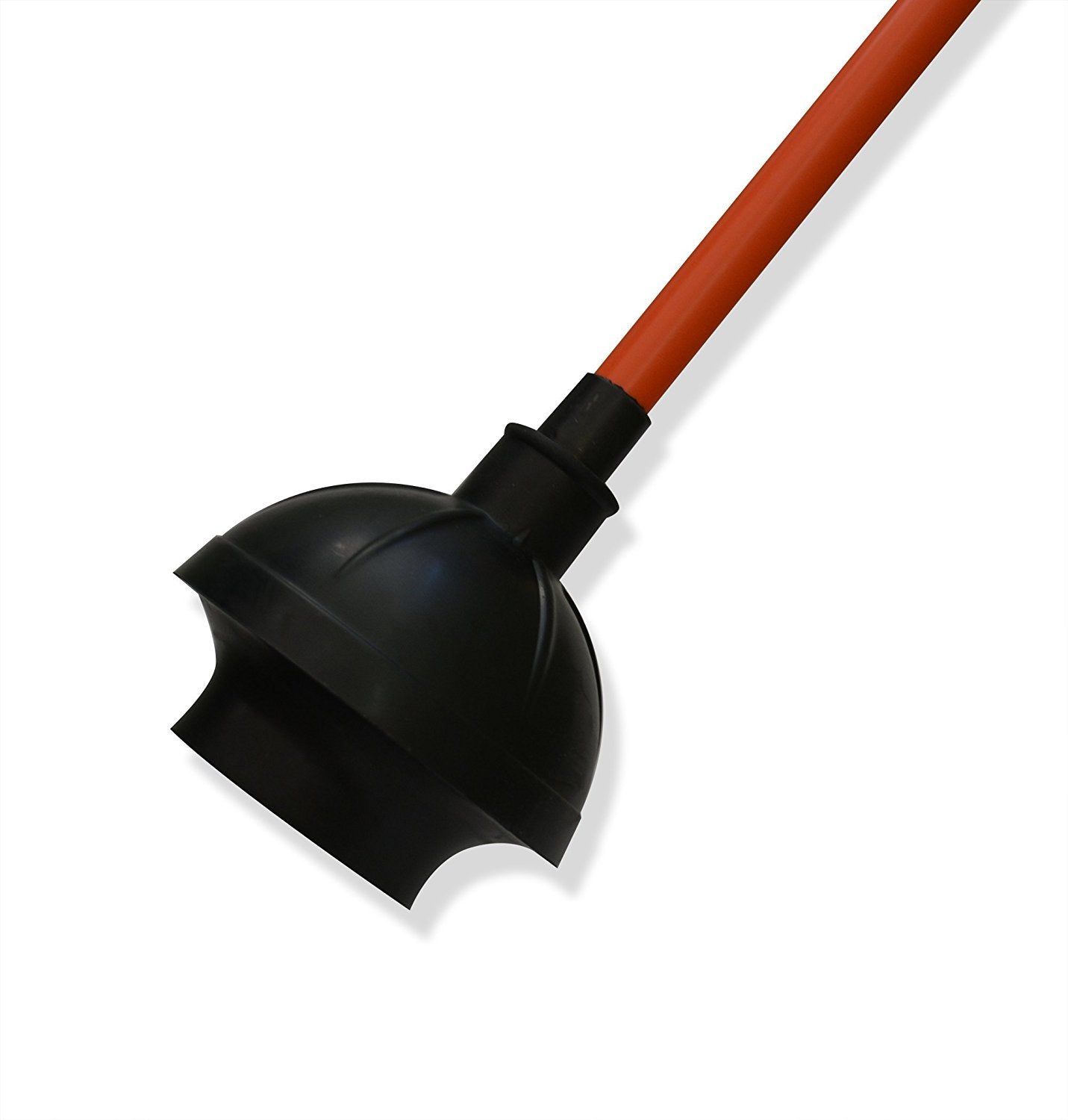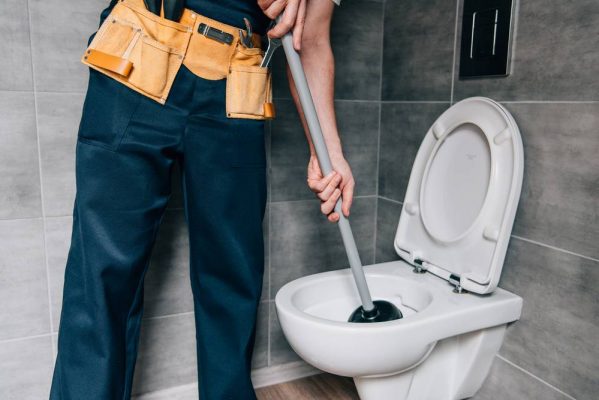Successful Plunger and Drain Cleaners Strategies: Best Approaches
Successful Plunger and Drain Cleaners Strategies: Best Approaches
Blog Article
In this article on the next paragraphs you will find a bunch of incredibly good content concerning How to Use a Plunger to Unclog a Toilet or Drain.

Introduction
Proper upkeep of home drains pipes is vital for protecting against blockages and making certain smooth water flow. One of the secret devices in every homeowner's toolkit is the plunger, together with numerous drainpipe cleaners developed to deal with persistent obstructions properly. This article explores how to utilize plungers and drain cleaners efficiently to keep your drains flowing freely.
Area 1: Recognizing Bettors
Sorts of Plungers
There are a number of kinds of plungers available, each developed for different sorts of drains pipes and clogs. One of the most usual types include mug plungers, flange plungers, and accordion bettors.
Just How Plungers Job
Plungers work with the principle of developing pressure and suction to remove obstructions. When properly applied over a drainpipe, they develop a vacuum that can pull out debris or break up obstructions.
Picking the Right Plunger
Selecting the ideal plunger relies on the kind of drainpipe and the nature of the clog. Cup plungers are excellent for sinks and bathtubs, while flange bettors are much better suited for bathrooms due to their style.
Typical Errors with Plungers
Preventing these errors makes sure efficient plunging: improper seal around the drain, insufficient pressure, and unclear surrounding debris.
Section 2: Making Use Of Plungers Effectively
Prep work
Prior to diving, make certain the bettor covers the drainpipe completely and creates a limited seal. Clear any kind of visible particles around the drain opening.
Strategy
Begin with gentle plunging movements to develop suction. Rise pressure slowly, using a steady rhythm. Repeat as needed up until the drain gets rid of.
Fixing Tips
If diving doesn't work, try changing the seal, applying oil jelly for a much better seal, or using a various kind of bettor.
Section 3: Understanding Drainpipe Cleansers
Kinds Of Drainpipe Cleaning Company
Drain pipes cleaners can be chemical or enzymatic. Chemical cleansers utilize solid chemicals to dissolve clogs, while chemical cleansers use natural enzymes to break down organic matter.
Exactly How Drain Cleaners Job
Chemical cleaners react with clogs to dissolve them, while enzymatic cleansers break down natural products like hair and oil without damaging pipes.
Safety and security Factors to consider
Always use handwear covers and eye protection when using chemical drain cleaners. Guarantee ample ventilation and comply with manufacturer instructions thoroughly.
Eco-Friendly Alternatives
Take into consideration using vinegar and baking soft drink or enzyme-based cleaners for environmentally friendly alternatives that are much safer for pipelines and the environment.
Area 4: Using Drain Cleaners Properly
Application Techniques
Pour chemical cleaners directly right into the drainpipe opening. Permit them to help the advised time before flushing with hot water. Chemical cleansers must sit over night.
Preventative measures
Prevent mixing different sorts of cleaners, as this can generate poisonous fumes. Never ever use chemical cleaners combined with a bettor, as spilling can happen.
Taking Care Of Persistent Blockages
For persistent obstructions, take into consideration utilizing a pipes serpent or calling an expert plumbing technician to avoid damages to pipelines.
Conclusion
To conclude, comprehending just how to use plungers and drainpipe cleansers properly is vital for keeping healthy pipes systems. By picking the right tools and strategies, home owners can take on minor obstructions and avoid major pipes issues down the line.
4 DIY Ways to Unclog Drains
Wire Hanger
This age-old technique has been used by many an amateur plumber – to much success. Take any wire hanger, deconstruct its shape and leave a small hook shape on the end. Time to go fishing! Remove the shower or sink drain cover and snake the wire into the drain, wiggling and rotating it as you push it through. Dispose of the gunk that you remove and flush the drain with hot water. Rinse with a pan of boiling water for best results.
Plunger
Creating a suction in your drain can break up clogs caused by hair and soap residue build up. First, make sure you are using the correct type of plunger, one specifically for sinks or tubs. They are typically smaller than regular toilet plungers and often have a shallow suction cup. Regular plungers can work too but we’d recommend cleaning them first and finding a way to create better suction over the drain.
Baking Soda and Vinegar
This technique is a classic – and one of the most popular DIY drain unclog methods. Pour one cup of baking soda and one cup of vinegar down the drain and allow it to work its magic overnight. The next morning, flush the drain with boiling water. Repeat if necessary.
Drain Snake/Hair Clog Tool
If you know your clog is caused primary by hair, a drain snake/hair clog tool might be your best option. These tools can be purchased for under $10 at any hardware store and work well so long as the clog isn’t too deep in the drain.
https://www.callcatons.com/blog/four-diy-ways-to-unclog-drains/

Application Techniques
Pour chemical cleaners directly right into the drainpipe opening. Permit them to help the advised time before flushing with hot water. Chemical cleansers must sit over night.
Preventative measures
Prevent mixing different sorts of cleaners, as this can generate poisonous fumes. Never ever use chemical cleaners combined with a bettor, as spilling can happen.
Taking Care Of Persistent Blockages
For persistent obstructions, take into consideration utilizing a pipes serpent or calling an expert plumbing technician to avoid damages to pipelines.
Conclusion
To conclude, comprehending just how to use plungers and drainpipe cleansers properly is vital for keeping healthy pipes systems. By picking the right tools and strategies, home owners can take on minor obstructions and avoid major pipes issues down the line.
4 DIY Ways to Unclog Drains
Wire Hanger
This age-old technique has been used by many an amateur plumber – to much success. Take any wire hanger, deconstruct its shape and leave a small hook shape on the end. Time to go fishing! Remove the shower or sink drain cover and snake the wire into the drain, wiggling and rotating it as you push it through. Dispose of the gunk that you remove and flush the drain with hot water. Rinse with a pan of boiling water for best results.
Plunger
Creating a suction in your drain can break up clogs caused by hair and soap residue build up. First, make sure you are using the correct type of plunger, one specifically for sinks or tubs. They are typically smaller than regular toilet plungers and often have a shallow suction cup. Regular plungers can work too but we’d recommend cleaning them first and finding a way to create better suction over the drain.
Baking Soda and Vinegar
This technique is a classic – and one of the most popular DIY drain unclog methods. Pour one cup of baking soda and one cup of vinegar down the drain and allow it to work its magic overnight. The next morning, flush the drain with boiling water. Repeat if necessary.
Drain Snake/Hair Clog Tool
If you know your clog is caused primary by hair, a drain snake/hair clog tool might be your best option. These tools can be purchased for under $10 at any hardware store and work well so long as the clog isn’t too deep in the drain.
https://www.callcatons.com/blog/four-diy-ways-to-unclog-drains/

I'm very occupied with How to Use a Plunger to Unclog a Toilet or Drain and I really hope you enjoyed the new article. Sharing is caring. One never knows, you may be helping someone out. Thank you for your time. Come back soon.
Schedule Now Report this page